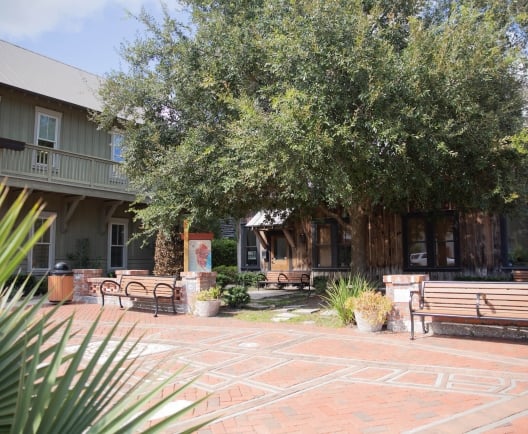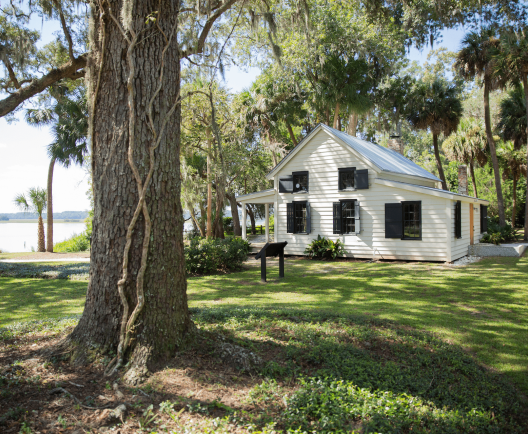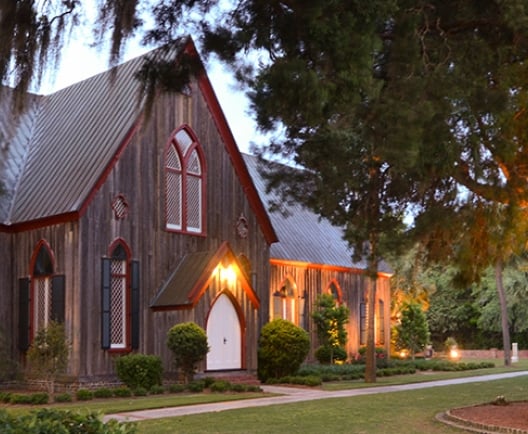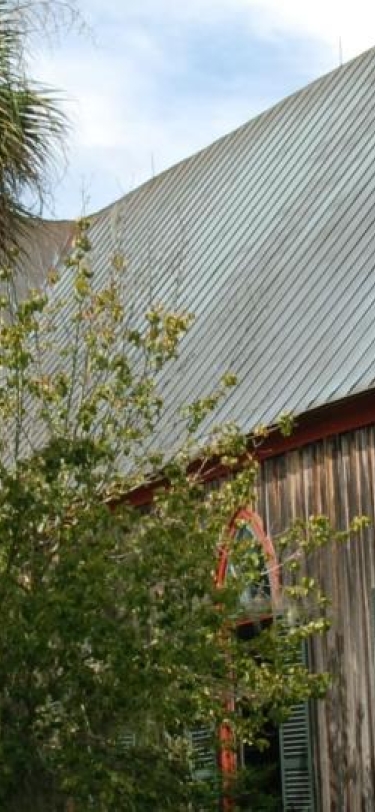Stories of a Coastal 19th-Century Town
Before it topped “Best of…” lists for everything from local cuisine to rich culture and history, Bluffton was made for enjoying Lowcountry summers. A stroll among the centuries-old oaks is to walk through a distinct sense of place and time. We’re reminded of our past and the people who came before us in every historic landmark, charming church, and some of our most endearing traditions.
We’re deeply connected to the May River and its ecosystem, the soul of our town. We’ve been shaped by it. And the people here are the very heart of welcoming hospitality that goes back for generations. We’re full of stories. Here are just a few of them.

The First Inhabitants
Long before settlers began making their mark in this pristine wilderness just north of the Savannah River more than 250 years ago, a group of indigenous people inhabited the coastal South Carolina Lowcountry. The Yemassee Indians moved around the area until the Yemassee War broke out in 1715 and the tribe migrated to Florida after several years of fighting.
European Settlement
Historic Old Town Bluffton emerged in the early 1800s as small dwellings high atop river bluffs overlooking the May River. Strong southerly breezes from the river kept the infectious mosquitoes at bay and made sultry summer days bearable, so this coastal community grew in popularity during the antebellum period, an escape from the harsh inland plantation conditions in the summer months that often manifested into yellow fever and malaria outbreaks.
The layout of the town's streets in 1830 suggests Bluffton started as a summer haven, but soon developed into a commercial center for isolated plantations in the vicinity that received their goods from Savannah by way of the May River. The town was a place where children could attend school and planter families could socialize and discuss the politics of the day. Two notable structures reflecting the history and architecture of the time are The Heyward House, circa 1840, and The Church of the Cross.
War & Uncertainty
A hotbed for political rhetoric, some of the first cries of secession were given voice and debate in Bluffton in 1844. Incensed planters gathered beneath what became known as the "Secession Oak" (which still exists in Bluffton today, on private property), and the secessionist movement was born. Sixteen years later South Carolina became the first state to secede from the Union.
On June 4, 1863, several Union gunboats and a transport carrying 1,000 infantrymen steamed up the river to Bluffton because, as the officer in charge wrote in his report, "This town has been the headquarters for the rebels for a long time in this vicinity." Troops were landed with orders to fire the town. Confederate soldiers attacked but were outnumbered and outgunned. When shelling and torching ended and the Union forces withdrew, 34 or more homes, churches and other buildings had been destroyed.
With the Civil War raging and Union forces' occupation of Hilton Head Island and Beaufort, the town was mostly abandoned by residents and utilized as a base for Confederate pickets observing Union troop movements. The town was pillaged by Union forces on several excursions up the May River and eventually burned in June of 1863. The overall destruction was severe, 75% of the town was destroyed, and only 15 homes and two churches survived.
Commercial Resurgence & Summer Resort
By the turn of the century, the town again experienced growth thanks to a burgeoning oyster harvesting business and the opening of several hardware and dry good stores. Lowcountry residents returned to Bluffton, a place many continue to call home, for the summer. The 1922 construction of the Houlihan Bridge from Port Wentworth, GA, to SC Highway 17 ended commercial trade by water within a few years. This shift away from commercial trade ushered in a new phase of Bluffton development, returning to its roots as a summer getaway.
Bluffton Rising
Over the last 60 years, Bluffton has attracted many full-time residents due to the growth of Hilton Head Island as a major vacation destination. Today Bluffton is one of the fastest-growing towns in South Carolina and has become an important tourism partner with Hilton Head Island.
Bluffton Walking Tours
Tour the historic landmarks and stops of Bluffton’s National Register Historic District. Visit shops, galleries, and museums. Meander the oak-lined streets of Old Town Bluffton on a self-guided walking tour.


Guided Walking Tours
Tour the rooms, outbuildings, and grounds of Heyward House with a guide, followed by a 1.5-hour tour of the Historic District. Be sure to ask your guide about the frequent supernatural activity reported here—a great mix of local lore and haunting, Lowcountry history!
The Garvin-Garvey House
Built by freed slave Cyrus Gardner on the banks of the May River around 1870, the small cottage is a fine example of the South Carolina vernacular architecture of the late 19th century.
Built by freed slave Cyrus Gardner on the banks of the May River in approximately 1870, the small cottage named the “Garvin House” is a fine example of the South Carolina vernacular architecture of the late 19th century. Unfortunately, when it was sold by the Garvin family in 1960, it had crumbled into ruin after being used for many years as storage for the Bluffton Oyster Factory. Working with experts, the Town of Bluffton restored the house, reclaiming and using roughly fifty percent of the original building materials. Tours available Tuesdays and Thursdays, reserve through the Heyward House Historic Center.


The Church Of The Cross
One of Bluffton’s oldest surviving buildings. Listed with The National Register of Historic Places since 1975. A place of worship, beauty, and spiritual reflection for more than 150 years. The Church of the Cross has played a pivotal role in the Bluffton community since 1854, when the present building that stands watch over the bluff where Calhoun Street ends at the river was consecrated.
Free docent-guided tours Monday–Saturday 11 a.m.–2 p.m.
